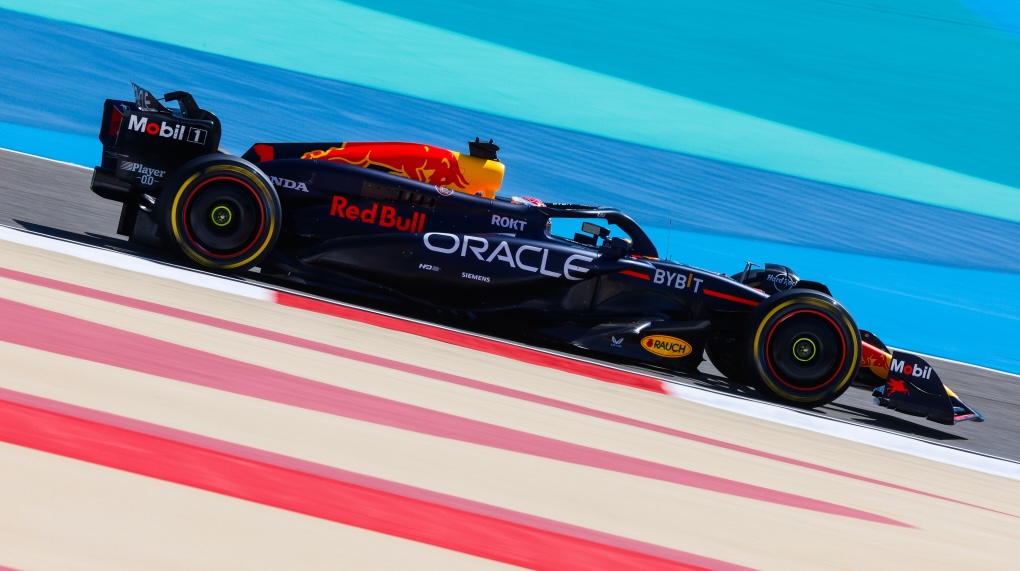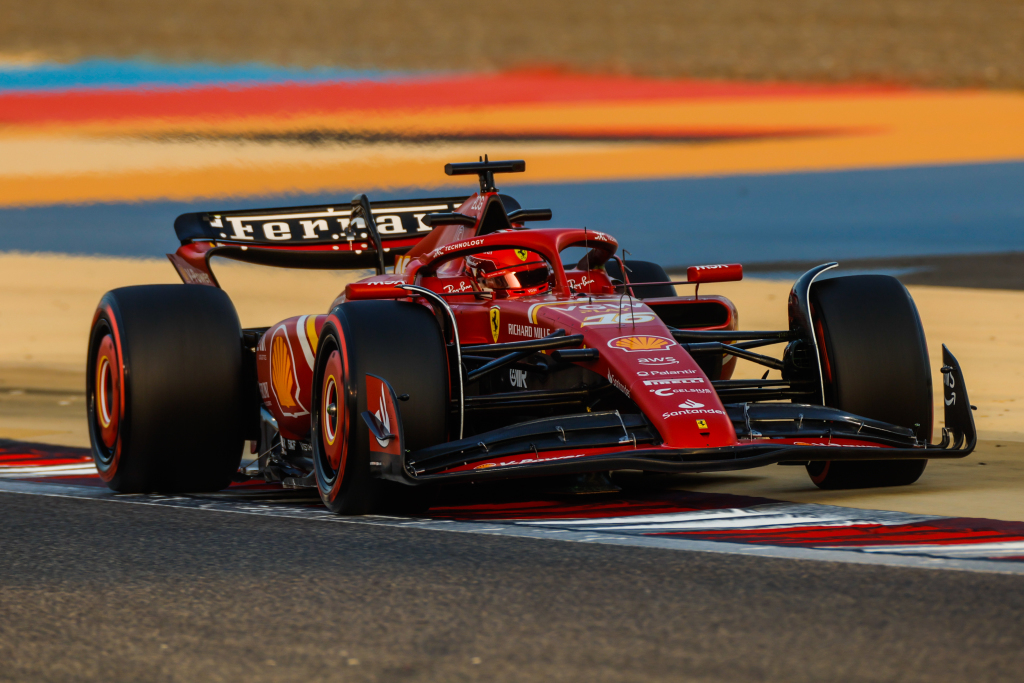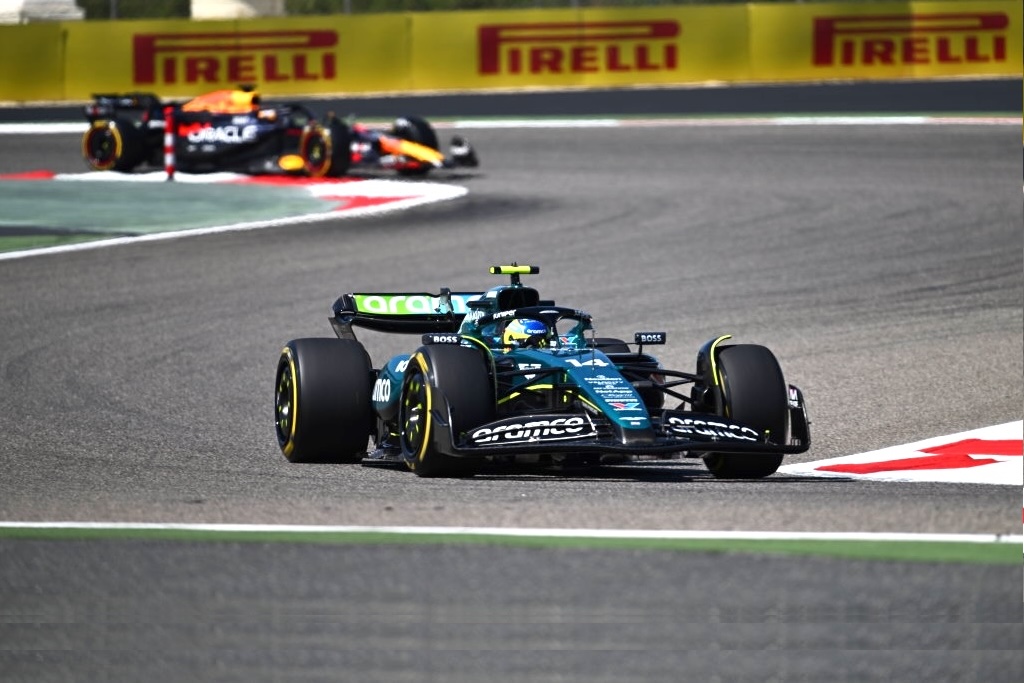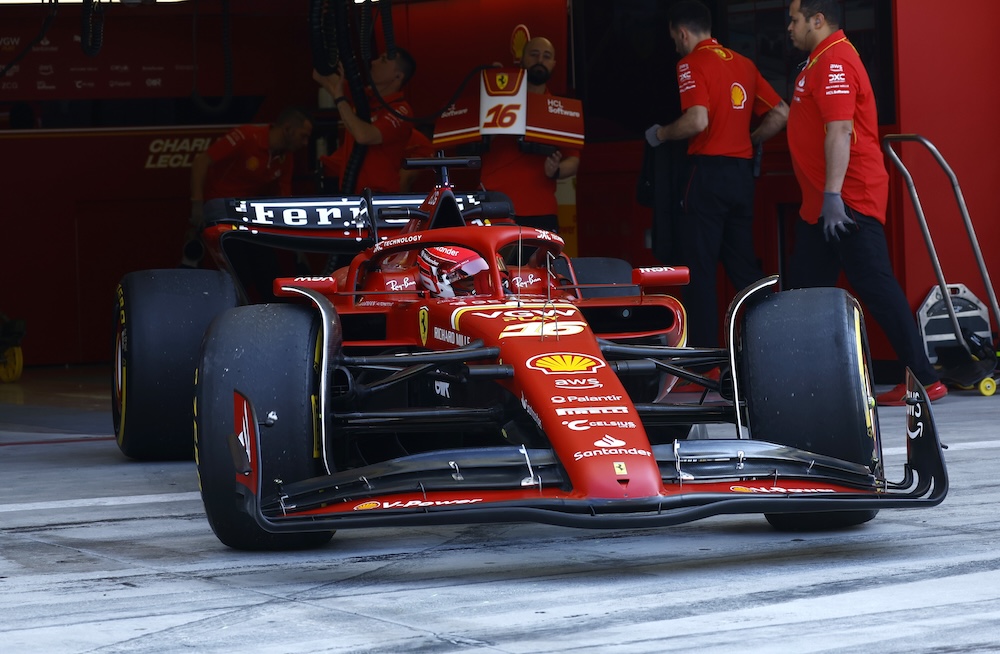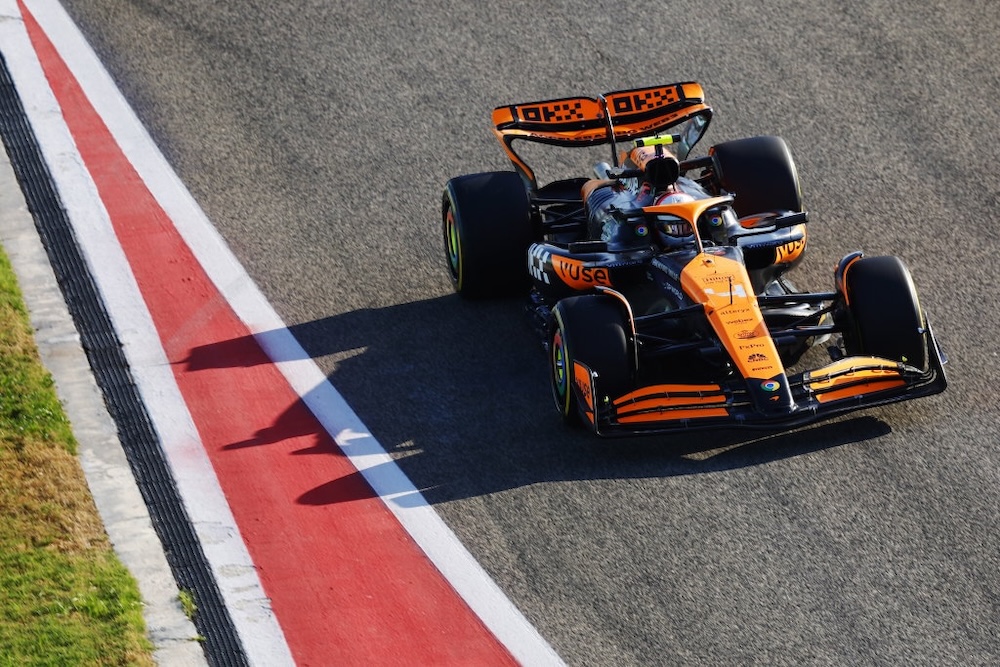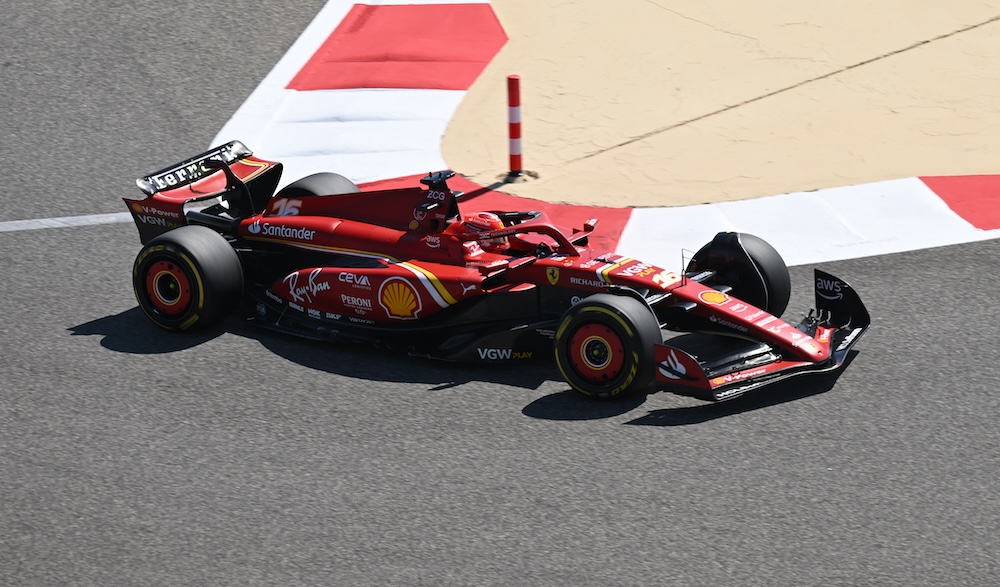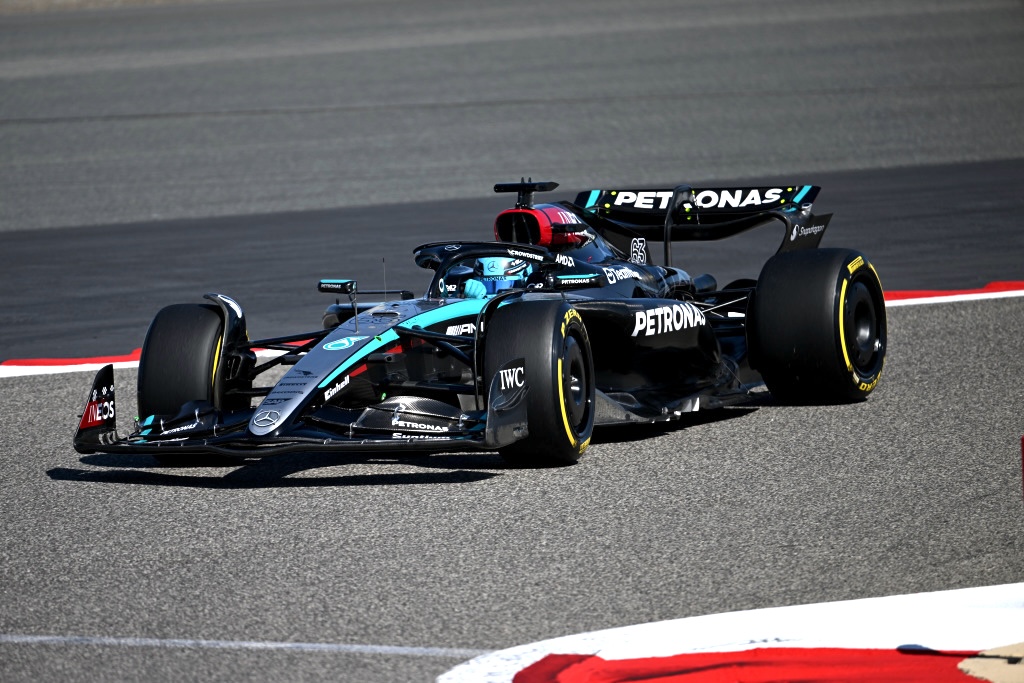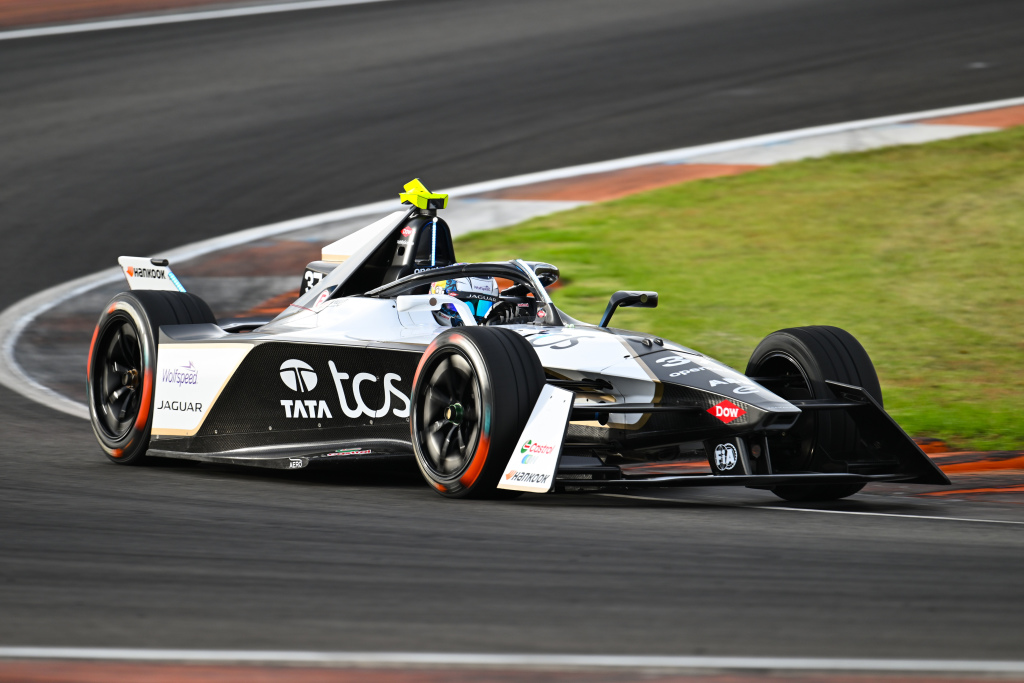You can’t pick a guaranteed testing order based on lap times, and this week in Bahrain showed exactly why.
Look at the headline laps and you see Carlos Sainz sitting at the top of by quite some distance, with his day two time of 1m29.921s leaving him 0.4s ahead of his teammate Charles Leclerc. But both Ferrari drivers set their best laps on the softer C4 compound tire that won’t even be used during the race weekend in seven days’ time, gaining an advantage of around half a second over those who stuck to the C3.
Even so, that would mean the best C3 time of a 1m30.679s set by Sergio Perez doesn’t totally erase the tire offset, but there’s little to suggest there is any team other than Red Bull in serious contention for victory when the paddock reconvenes for next weekend’s Bahrain Grand Prix.
“I think 19 drivers in the paddock now will think that [they] will not win the championship,” Fernando Alonso admitted on Friday, despite optimism within Aston Martin that it has cemented last year’s step forward. “It happens 99% of the time in your career. This is a brutal sport.
“It’s difficult to tell now [if Aston has a race-winning car]. I would say, I think after seeing Max [Verstappen] and the Red Bull two days ago there are less chances for everyone else to win a race this year. But this is how it is.”

It might seem odd to be pointing to the opening day given the fact Verstappen’s best lap was 1.4 seconds slower than the best from Sainz 24 hours later, but the first day is traditionally spent scanning new cars, raising and lowering the ride heights dramatically and gathering as much aero data as possible.
And the RB20 was definitely a car that needed those kinds of duties carrying out, given the dramatic departure from its predecessor that it is. Technical director Pierre Wache admitted to me on the opening day that it was “a big risk” to change the car so much after the dominance of the RB19, but that it was required to stop rivals catching up.
So for Verstappen to go 1.1s clear of the field when doing that initial work on Wednesday, on a track that did not have the grip levels that would increase by the end of the week, and end up with a lap time that at least tire-corrected was within half a second of the fastest on the final day, hints at some serious raw pace.
Traditionally, teams that note such an advantage early on also tend to then ensure they don’t confirm it to the world or give away its full extent, and will run with particularly high fuel loads or detuned engine modes to slow themselves down.
Its rivals certainly believed that to be the case, with estimates varying from a half-second advantage (from Williams) to a full second (from Mercedes), and others sitting in between.
“I’ve no idea [where McLaren is], but honestly definitely quite a chunk behind Ferrari and quite a chunk behind Red Bull — I think they’re clearly a long way ahead,” Lando Norris said after a greatly improved showing from McLaren compared to the past two years.
“Apart from that we’re still not in a bad position; we’re probably just around that next pack, but those two teams definitely seem to have a decent advantage over everyone else.”

The Ferrari pace is no surprise, either, with Sainz admitting he would actually have been shocked if the SF-24 wasn’t capable of at least threatening Red Bull’s headline times. Last year Ferrari took more pole positions than Red Bull in the second half of the season, but tire degradation was the concern, as was the car’s sensitivity to wind.
The test offered the chance to analyze both, with Fred Vasseur confirming a step forward on the race simulations and not being drawn into trying to judge the gap to Red Bull due to fuel load discrepancies.
“About the order of performance, I think it is too early to draw any conclusions because I think it is quite tight,” Vasseur said. “For ten kilos of fuel, you will move from P2 to P6 or P7, which means the most important thing is to focus on yourself, to have a good feedback from the drivers and so far their feeling is good.
“Very difficult to know [Red Bull’s advantage] because we don’t know if they are running the car with 20 kilos or 80 kilos, but this is 2.5s difference and it means it is very difficult to draw any conclusions. They did a race simulation but it was a different approach; they did one yesterday but it was much earlier than Carlos with a different track, so it is difficult to know. We will focus on ourselves and find out in one week’s time.”
The fact that Vasseur didn’t attempt to put the pressure on Red Bull by declaring it a clear favorite — as Leclerc did regularly during the week — could hint at Ferrari confidence that it has a strong car, but then many teams can claim the same, even if Red Bull has moved the goalposts.

Mercedes rarely caught the eye on track, but off it the drivers’ comments were telling and backed up from an engineering standpoint when trackside engineering director Andrew Shovlin was willing to declare the 2024 car a greatly improved foundation to build from.
“We’ve had three useful days here in Bahrain and managed to make good progress understanding the W15,” Shovlin said. “Compared to last year’s car, the feedback from the drivers is very different and more positive, which is encouraging. The team has worked hard to iron out the handling flaws that were integral to the W14, and it’s great that we seem to have put a number of those problems behind us.
“Over the course of the test we’ve made good steps on our understanding of the car. The task of the next few days is to pick through the results and put together the best package to take into the race weekend.
“It’s never easy to make predictions on pace from testing, as all teams are quite effective at hiding their pace when they want to. It’s clear that we are in a much better position than 12 months ago, though.”
Just another reminder that it’s not always just about the lap times. Red Bull will more than likely emerge with some sort of clear advantage in the opening round, but ahead of a stronger chasing pack that doesn’t appear to have major issues to solve: The Mercedes is more driver friendly, the Ferrari kinder to its tires, the McLaren starting where it finished last year and the Aston Martin impressively evolved.
A smaller gap to Red Bull than some of the more dramatic team predictions would help, but if any one of them can make strides in the development race, then it still could be a more competitive year than 2023.
But as Alonso pointed out, those day one signs from Verstappen are proving tough to ignore.
